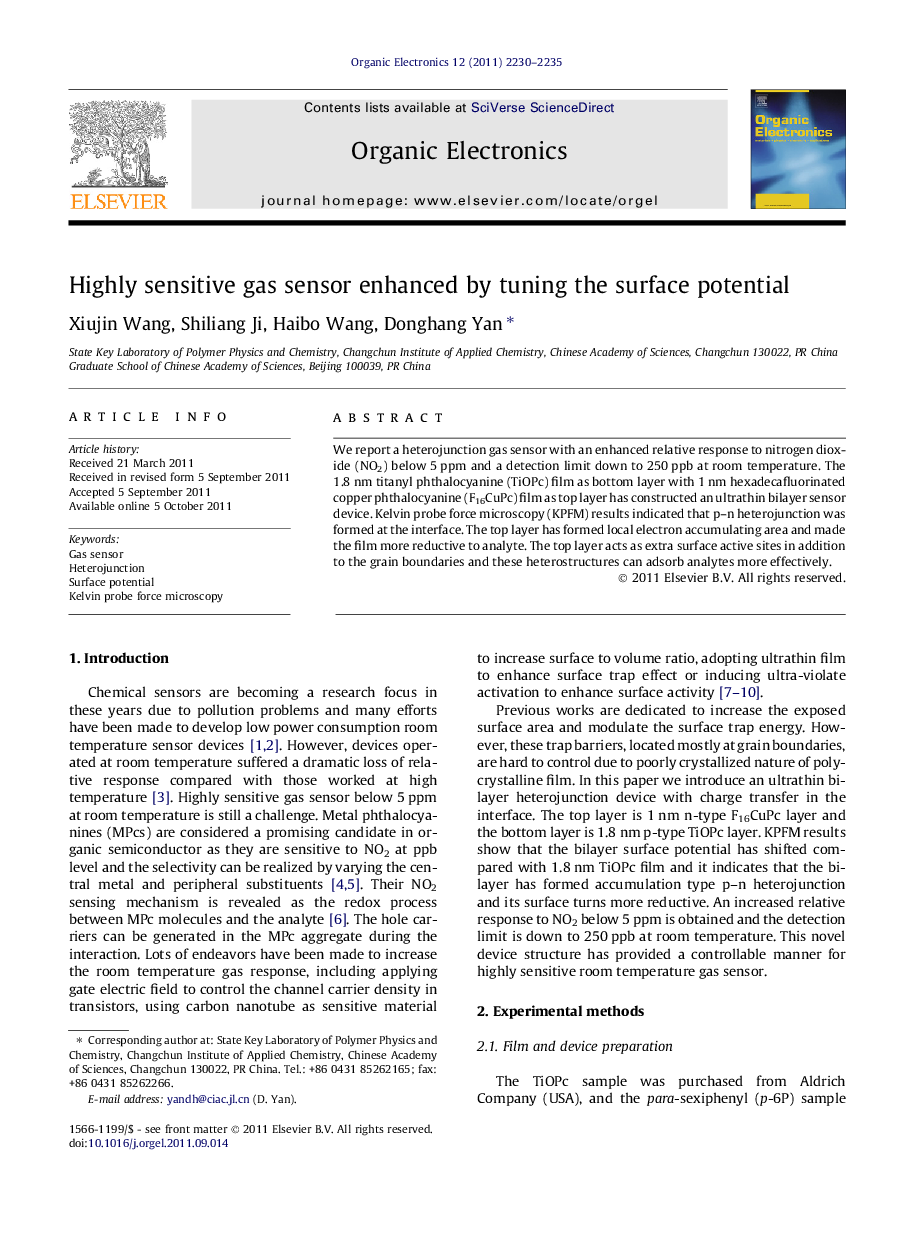| Article ID | Journal | Published Year | Pages | File Type |
|---|---|---|---|---|
| 1267586 | Organic Electronics | 2011 | 6 Pages |
We report a heterojunction gas sensor with an enhanced relative response to nitrogen dioxide (NO2) below 5 ppm and a detection limit down to 250 ppb at room temperature. The 1.8 nm titanyl phthalocyanine (TiOPc) film as bottom layer with 1 nm hexadecafluorinated copper phthalocyanine (F16CuPc) film as top layer has constructed an ultrathin bilayer sensor device. Kelvin probe force microscopy (KPFM) results indicated that p–n heterojunction was formed at the interface. The top layer has formed local electron accumulating area and made the film more reductive to analyte. The top layer acts as extra surface active sites in addition to the grain boundaries and these heterostructures can adsorb analytes more effectively.
Graphical abstractFigure optionsDownload full-size imageDownload as PowerPoint slideHighlights► A bilayer sensor device was fabricated and it shows an enhanced response towards NO2 compared with monolayer device. ► p–n Heterostructure was formed in bilayer and the surface potential is adjusted. ► These electron accumulating areas made the film more reductive to NO2 and made the bilayer device more sensitive.
